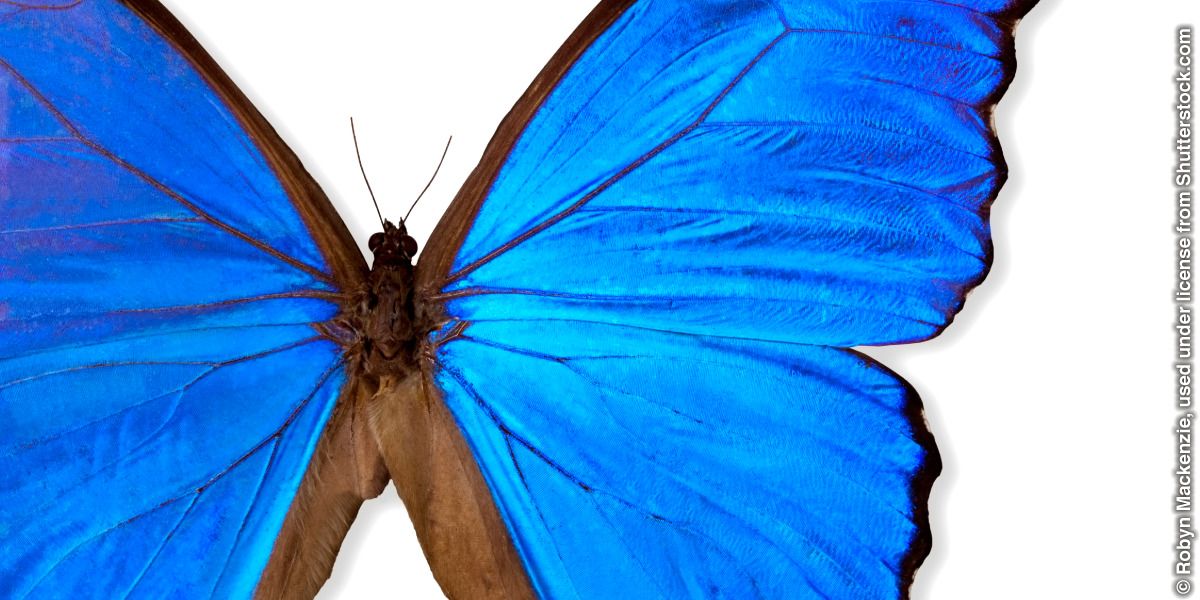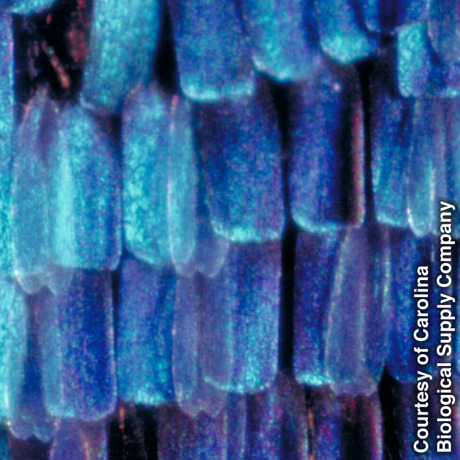
The wings of a butterfly are so fragile that even the weight of specks of dust or drops of moisture could make flying difficult. Nevertheless, the wings stay clean and dry. What is the butterfly’s secret?
Researchers studying the Giant Blue Morpho butterfly (Morpho didius) found that although the insect’s wings look smooth to the naked eye, the surfaces are covered with minute overlapping scales that resemble tiles on a roof. Even tinier parallel grooves on the surface of these scales cause dirt or drops of water to roll off with ease. Engineers are seeking to copy the wings’ texture in order to make high-tech coatings for industry and medical equipment that are resistant to dirt and water.
The butterfly’s wing is another example of how science is trying to mimic the designs found in living things. “Nature is full of engineering marvels, from the micro to the macro scale, that have inspired mankind for centuries,” says researcher Bharat Bhushan.
